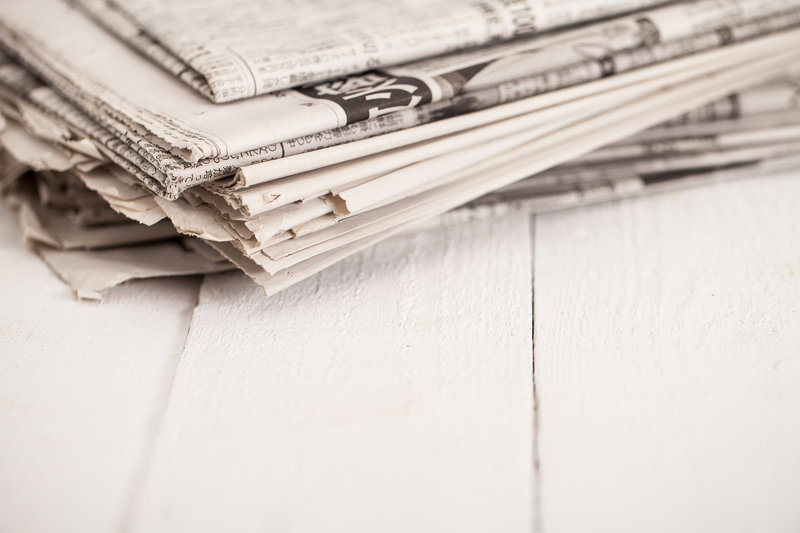Understanding the Environmental Impact of Packaging and Cardboard Disposal
In today's modern society, packaging materials--especially cardboard--play a central role in the global flow of goods. From the convenience of delivery boxes to robust protective packaging, cardboard is everywhere. However, the surge in consumption also brings concerns about its environmental impact. This comprehensive guide explores how packaging and cardboard disposal affects the environment, covers sustainable alternatives, and suggests practical steps for minimizing ecological harm.

Table of Contents
- The Importance of Packaging in Modern Society
- Environmental Challenges of Packaging
- How Cardboard is Made: Key Insights
- Disposal and Recycling of Cardboard
- Cardboard Packaging: Environmental Impacts Explained
- Innovations and Sustainable Alternatives
- Consumer Behaviour and Responsibility
- Practical Steps for Eco-Friendly Packaging Disposal
- Conclusion: Moving Towards a Greener Future
The Importance of Packaging in Modern Society
Packaging is indispensable--it protects products, enables safe transportation, communicates brand values, and offers user convenience. The e-commerce boom has further amplified the role of cardboard packaging, making it a staple in both commercial and private consumption. Nevertheless, increased usage inevitably elevates concerns regarding its environmental footprint.
Environmental Challenges of Packaging
Packaging waste has become a critical issue for waste management systems worldwide. The journey of packaged goods from manufacturer to end user generates significant amounts of material, often used for a fleeting moment before disposal. The environmental impact of disposable packaging includes:
- Resource depletion: Huge quantities of raw materials are needed for packaging production.
- Energy consumption: Manufacturing and transporting packaging require substantial energy.
- Waste accumulation: Used packaging often ends up in landfills or incinerators, contributing to pollution.
- Plastic pollution: Mixed packaging materials (combining cardboard with plastic) can be hard to recycle effectively, worsening the pollution problem.
As a result, understanding and reducing the environmental impact of cardboard disposal becomes urgent.
How Cardboard is Made: Key Insights
The Cardboard Manufacturing Process
Cardboard, also known as linerboard or corrugated fiberboard, is typically made from wood pulp or recycled paper. The manufacturing process involves several stages:
- Pulping: Breaking down wood or used cardboard into a pulp using water and sometimes chemicals.
- Pressing and Drying: The pulp is pressed into sheets and dried, forming the basic substrate for cardboard.
- Corrugation: Sheets are shaped into a wavy pattern and sandwiched between flat liners to add strength and durability.
Environmental impacts during production include:
- Deforestation: Traditional cardboard production may contribute to logging and loss of biodiversity if virgin fibers are used.
- Water pollution: The use of chemicals and large quantities of water can cause contamination if not managed responsibly.
- Energy consumption: Large-scale factories use significant amounts of energy, often derived from non-renewable sources.
Disposal and Recycling of Cardboard
The Lifecycle of Cardboard Packaging
Cardboard is often lauded for its recyclability. But what happens after you discard a shipping box or cereal package? Here's a breakdown:
- Collection: Cardboard waste is picked up via curbside recycling or taken to recycling centers.
- Sorting: Cardboard is separated from other materials--clean, dry cardboard fetches the highest recycling value.
- Pulping: Recycled cardboard is pulped, cleaned, and reformed into new packaging products.
- Landfill/Incineration: Unfortunately, not all cardboard is recycled--a significant portion winds up in landfills or is incinerated, especially if contaminated with food or mixed materials.
While the recycling rate for cardboard is higher than most other packaging materials, the system is far from perfect.
Cardboard Packaging: Environmental Impacts Explained
The Hidden Costs of Cardboard Disposal
The environmental impact of cardboard disposal extends beyond the obvious. Even biodegradable materials like cardboard pose challenges when not properly managed:
- Landfill methane emissions: In anaerobic (oxygen-free) landfill conditions, decomposing cardboard releases methane--a potent greenhouse gas.
- Resource loss: Failure to recycle represents a loss of raw fiber resources.
- Contamination issues: Soiled cardboard (e.g., pizza boxes) can disrupt recycling streams and may be diverted to landfill.
Cardboard Lifecycle Environmental Footprint
Life cycle assessments have shown that packaging's environmental effects include:
- Carbon footprint: The total greenhouse gas emissions across production, distribution, and disposal.
- Water use: From pulp preparation to product cleaning, significant water is consumed.
- Pollution: Both air and water pollutants can be released along the supply chain.
Therefore, improving recycling rates and reducing contamination are vital in mitigating these effects.
Innovations and Sustainable Alternatives in Packaging
In response to growing environmental concerns, manufacturers and designers are increasingly adopting innovative approaches to packaging. Here are some notable trends and alternatives that reduce the environmental impact of packaging:
- Recycled content: More packaging companies are using a higher percentage of post-consumer recycled material.
- Biodegradable & compostable packaging: Materials like mushroom-based composites, molded pulp, and plant-based plastics are gaining popularity.
- Minimalist packaging design: Reducing excess packaging, opting for "right-sized" boxes, and eliminating non-recyclable inserts.
- Reusable solutions: Initiatives such as reusable shipping boxes and returnable packaging systems for e-commerce.
- Alternative fibers: Some brands are experimenting with wheat straw, bamboo, or even seaweed as fiber sources for sustainable packaging.
These innovative strategies directly decrease the amount of waste entering the waste stream and support a more circular economy.
Consumer Behaviour and Responsibility
While industry has a major role to play, individual consumers are crucial in shaping the future of sustainable packaging. Here are common behavioural pitfalls and practical solutions to minimize the environmental impact of packaging disposal:
- Wish-cycling: Placing non-recyclable or contaminated cardboard in the recycling bin can cause entire batches to be sent to landfill. Clean and flatten cardboard before recycling.
- Supporting green brands: Purchase from companies committed to sustainable packaging practices and transparency.
- Reuse before dispose: Cardboard boxes are versatile--reuse them for storage, moving, crafts, or shipping before recycling.
- Composting: Plain, uncoated cardboard can be safely composted at home, enriching soil and returning nutrients to the earth.
Education and awareness about where and how to dispose of packaging responsibly are fundamental for positive change.
Practical Steps for Eco-Friendly Packaging Disposal
How to Reduce the Environmental Impact of Packaging and Cardboard Disposal
Below are actionable steps that can help individuals, organizations, and communities address the ecological impact of packaging materials:
- Follow local recycling guidelines: Only recycle cardboard that is clean and dry. Remove any plastic tape, stickers, or labels where possible.
- Encourage group action: Participate in or organize community clean-up and recycling drives.
- Choose products with sustainable packaging: Look for certifications such as FSC (Forest Stewardship Council) and eco-labels indicating recycled content.
- Educate others: Share tips and raise awareness about the importance of responsible packaging disposal among family, friends, and colleagues.
- Advocate for better policies: Support local and national programs aimed at reducing packaging waste and improving recycling technologies.
- Compost at home: Tear up and compost uncoated cardboard, enhancing the condition of your garden while reducing landfill waste.
- Reuse creatively: Transform boxes into storage bins, organizers, or children's crafts before recycling or composting them.
Conclusion: Moving Towards a Greener Future
The environmental impact of cardboard packaging and disposal is a critical issue that requires collective responsibility. Manufacturers must innovate, governments should refine recycling programs, and consumers can make informed choices that reduce waste. By understanding the full lifecycle of packaging--from production to disposal--we can make meaningful progress towards sustainability.
Remember, small changes in our daily choices--selecting products with less waste, recycling properly, and spreading awareness--can have a large, lasting impact on the planet's health. Together, we can ensure that packaging serves its purpose without costing the earth.

Frequently Asked Questions: Environmental Impact of Packaging and Cardboard Disposal
- Why is cardboard considered eco-friendly compared to plastic?
Cardboard is biodegradable, recyclable, and made from renewable resources like trees or recycled paper, whereas plastic can persist for centuries and is usually derived from fossil fuels. - What should I do with greasy pizza boxes?
Greasy or food-soiled cardboard cannot be recycled but can often be composted. Tear off clean sections for recycling, and compost the rest if your local facility allows. - How can businesses minimize the environmental impact of packaging?
By using recycled content, minimizing packaging sizes, switching to renewable fibers, and encouraging consumers to recycle and reuse.
- Is composting cardboard better than recycling?
It depends on the local system. Composting returns organic material to the soil, whereas recycling saves resources needed for new paper products. Whenever possible, recycle clean cardboard and compost soiled pieces.
For more information on reducing the environmental impact of packaging and cardboard disposal, consult your local recycling authority or refer to national sustainability resources.